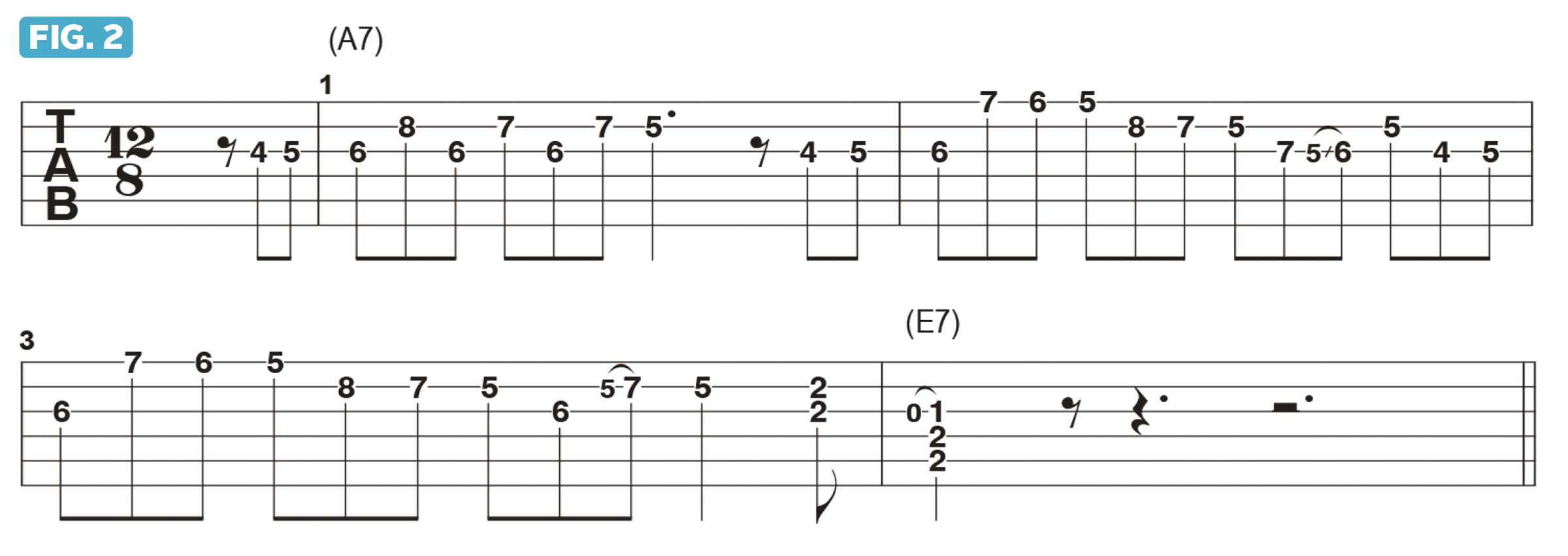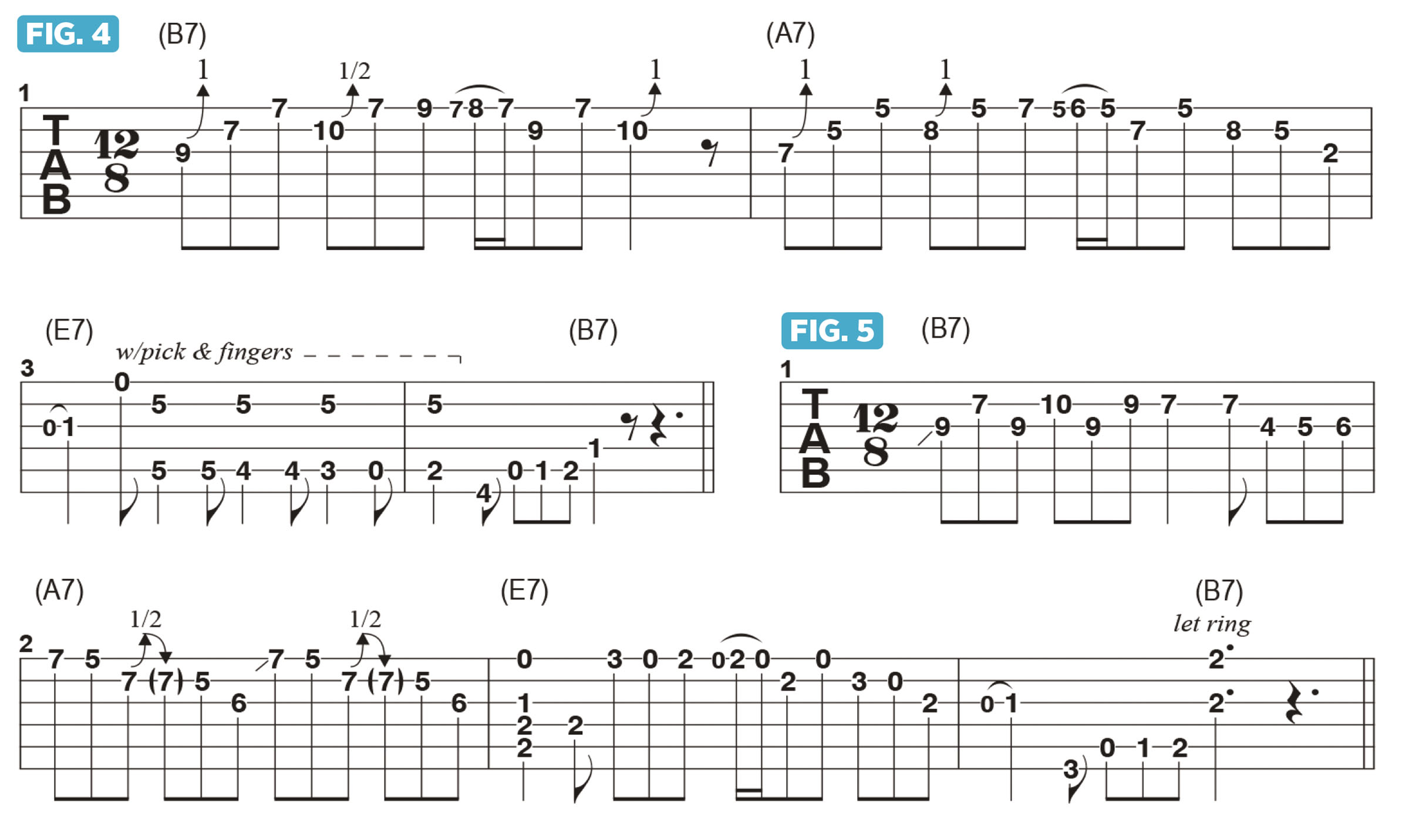In my previous columns, I’ve demonstrated a handful of what I consider to be essential “blues approved” licks that work well both as embellishments to rhythm parts or as phrases within a solo.
Our framework throughout has been a 12-bar blues shuffle in E, with focus on navigating the change from the I (one) chord, E7, to the IV (four), A7, and back. We then applied a similar approach for moving from E7 to the V (five) chord, B7, and then back down through the progression to A7 then E7.
The method I’ve emphasized for moving from E7 to A7 is to play the chromatically ascending notes B-C-C# on the G string, targeting C# on the downbeat of 1, followed by a high G note on the B string's 8th fret. These notes work well because C# is the major 3rd of A7 and G is the minor, or “flatted,” 7th. These two notes strongly and clearly describe the chord in this context.
In Figure 1, I expand on the previous phrases by adding the chromatically descending line B-Bb-A on the high E string. As you can see, the “walk up” to C# on the G string is followed by a B-Bb-A “walk down” to the A root on the high E string on the second beat of bar 2, which affirmatively acknowledges the implied A7 chord. I close out the phrase in a simpler manner before moving back to E7 in bar 3.

In Figure 2, I further demonstrate the differences between staying on the G and B strings and playing a simpler line, versus skipping from the G string over to the high E to play a slightly more complex phrase.
This is an effective way to weave a bit of chromaticism around the IV chord, A7, before resolving back to E7.

I encourage you to play around with these ideas and feel free to add more of your own invention and personality.
One way to do this is to include quick hammer-ons or pull-offs, as I demonstrate in Figure 3. Over A7, after the B-Bb-A walk-down on the high E string, I then do a quick A-Bb-A hammer/pull that leads into a descending line that clearly outlines the A7 chord.

Figure 4 offers a “Texas blues shuffle”-type of phrase played over the last four bars of the progression, starting from the V chord, B7.
I begin by thinking B minor pentatonic (B, D, E, F#, A), with a whole step bend from E to F# on the G string, followed by F# and B and then a half-step bend from A to A# (Bb) on the B string.

I then drop in the same quick hammer/pull introduced in Figure 3, but moved up a whole step and two frets to work over B7. In bar 2, over A7, I shift down two frets and repeat the same phrase down a whole step before wrapping up the phrase in bars 3 and 4 with a stock turnaround: while descending D-C#-C-B on the A string, I repeatedly fingerpick a high E root note on the B string’s 5th fret.
Figure 5 offers another four-bar phrase that moves from B7 to A7 to E7, with the melodic line shaped a little differently. There are countless ways to “skin a cat,” so to speak, so experiment with these phrasing ideas and see how many different variations you can come up with.







